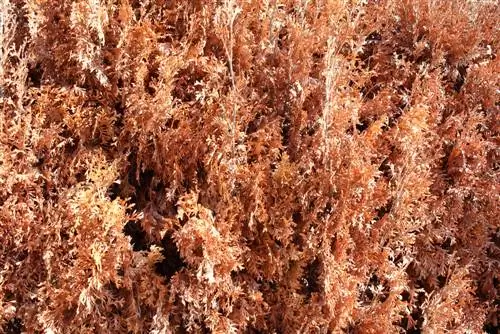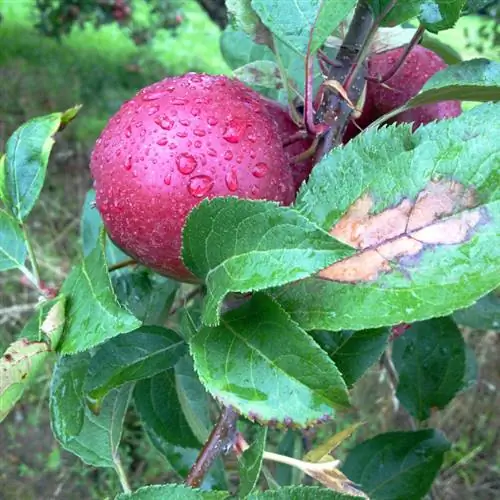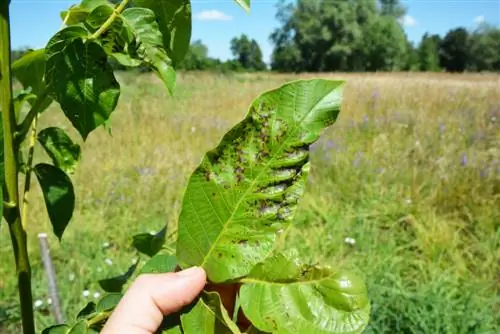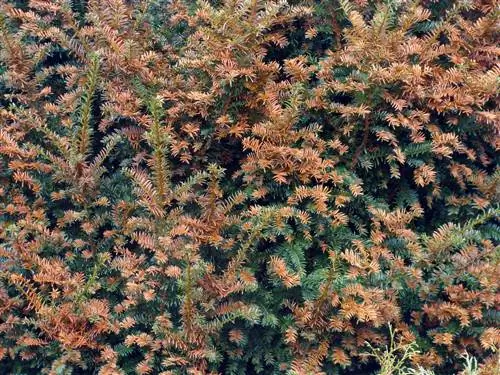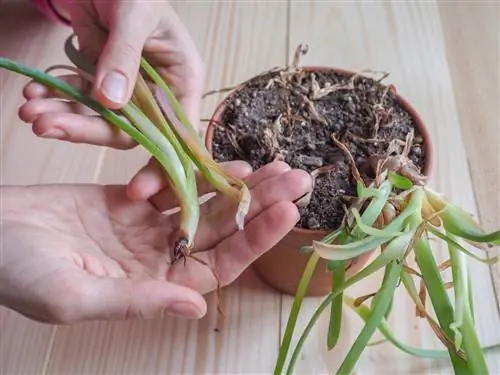- Author admin [email protected].
- Public 2023-12-16 16:46.
- Last modified 2025-01-23 11:21.
If the needles of the thuja change color and the tree of life generally looks sick, you should investigate the causes. Root rot is often responsible for the diseases. How do you recognize root rot, how does it occur and what can you do about it?
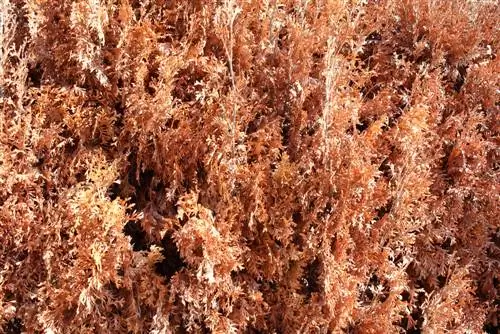
How to recognize and treat root rot on thuja?
Root rot in Thuja can be recognized by spots on the bark, brown shoot tips and a dried-out appearance. To treat root rot, infected thujas should be dug up and disposed of, the soil replaced and neighboring plants treated with fungicide. As a preventive measure, ensure good soil conditions and drainage.
Why does root rot appear on thuja?
The cause of root rot in thuja is a fungus that attacks the roots of the tree of life.
One reason for the infestation could be that the hedge was planted in a waterlogged location. Too much water promotes the spread of fungal spores. If the tree of life is too wet, it cannot absorb food or moisture through its roots.
Another possibility for this to occur is that the hedge or tree was planted in a place where there were many fungal spores in the soil.
Signs of root rot
- Spots on the bark
- Bark at the base turns brown
- Shoot tips turn brown
- Bark bursts and falls off
- Tree of life looks dried up
Treatment after the appearance of root rot
If you are infected with root rot, you should not wait long. In most cases it is already so pronounced that you can no longer save the tree of life.
Dig it up including the roots. Dispose of it in household waste - not in the compost in the garden!
Change the soil and replace it with humus-rich, slightly acidic substrate. If only individual thujas in the hedge are infected, treat the surrounding trees with a fungicide from a garden specialist.
Preventing root rot on the tree of life
Ensure good soil conditions so that isolated occurrences of fungal spores, which lead to root rot, do not cause the entire tree of life to die.
Before planting, loosen up the site thoroughly. If the soil is very dense, create drainage. Then the rainwater can drain away and there is no waterlogging.
Tip
Thuja Smaragd is a variety of arborvitae that reacts particularly strongly to compacted soil and too close planting distances. You should not cultivate this tree of life as a hedge, but rather as a single tree with plenty of distance from other plants.

